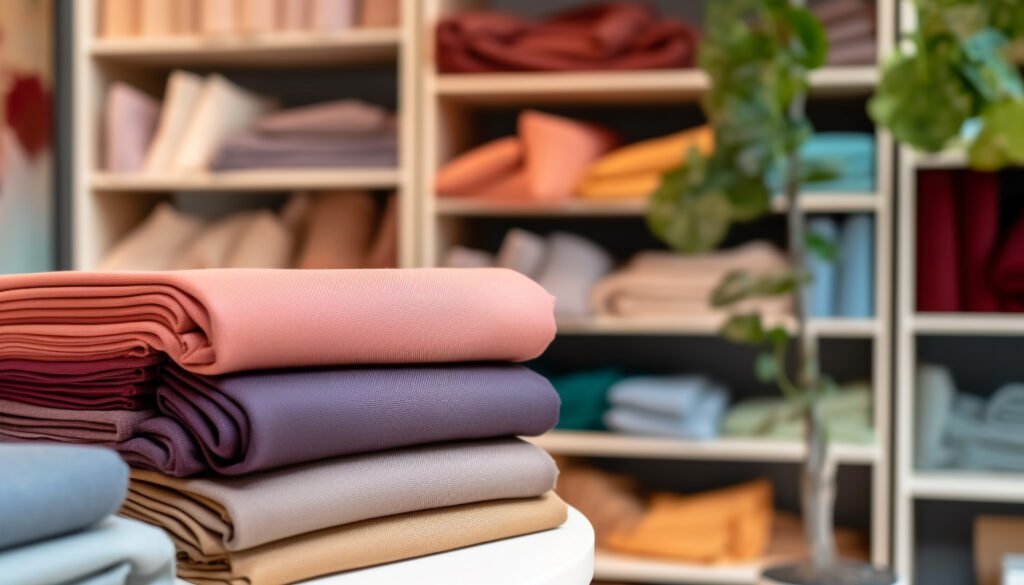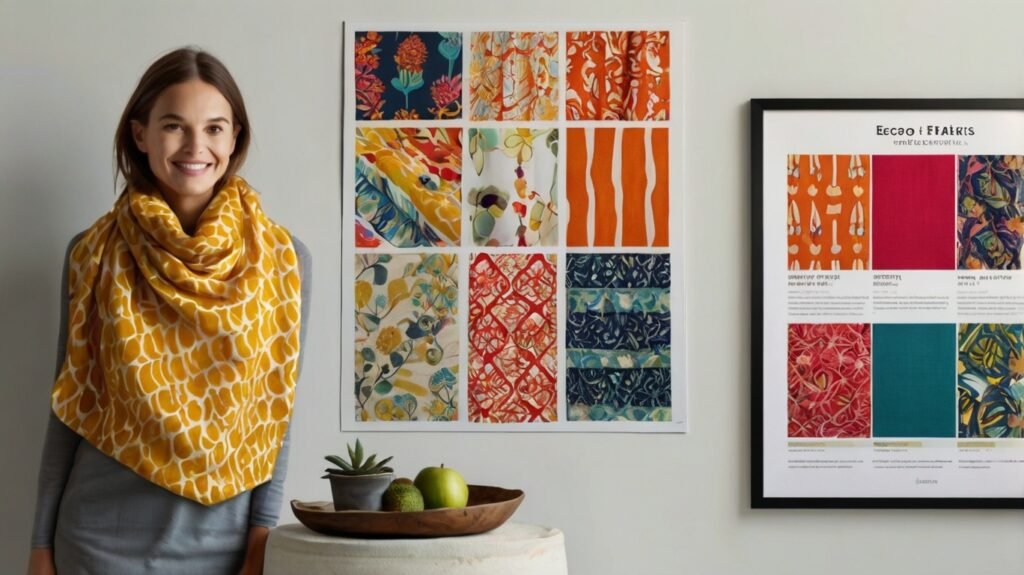Introduction
Fashion is more than just the clothes we wear; it’s a way to express ourselves. However, as I started to explore my style, I realized that my choices also impact the environment. This is where Top Eco-Friendly Fabrics come into play. In this article, I’ll share what I’ve learned about sustainable materials, why they matter, and how to make eco-friendly choices that are both stylish and kind to the planet.
What Are Eco-Friendly Fabrics?
Eco-friendly fabrics are materials made from sustainable sources that have a lower impact on the environment compared to conventional fabrics. These fabrics can come from natural resources, recycled materials, or even innovative processes that minimize harm to our planet.
During my journey, I discovered several types of eco-friendly fabrics that stand out for their sustainability and performance:
- Organic Cotton: Unlike traditional cotton, which often relies on synthetic pesticides and fertilizers, organic cotton is grown using natural methods. This means healthier soil, less water usage, and a fabric that is gentle on the skin. When I first wore an organic cotton t-shirt, I noticed how breathable it felt compared to regular cotton. It quickly became a staple in my wardrobe.
- Hemp: Hemp is a powerhouse when it comes to sustainable fabrics. It grows rapidly, requires minimal water, and can be cultivated without harmful chemicals. The first time I tried on a hemp shirt, I was amazed at how durable yet comfortable it felt. Plus, it only gets softer with each wash!
- Tencel (Lyocell): Made from the pulp of eucalyptus trees, Tencel is produced through a closed-loop process that recycles water and solvents. Not only is it biodegradable, but it also feels silky smooth against the skin. I remember feeling luxurious wearing my first Tencel dress, which is both eco-friendly and stylish.
- Recycled Polyester: This fabric is crafted from recycled plastic bottles, reducing waste and conserving resources. When I came across a trendy jacket made from recycled polyester, I was thrilled. It allowed me to look great while knowing I was making a positive environmental choice.
- Linen: Derived from the flax plant, linen requires fewer resources and is fully biodegradable. It’s perfect for warm weather, and I’ve found it to be incredibly comfortable during hot summer days. Plus, the natural texture adds an effortless elegance to any outfit.
Why Choose Eco-Friendly Fabrics?
Opting for eco-friendly fabrics is essential for several reasons:
- Lower Environmental Impact: By choosing sustainable materials, we help reduce water usage, energy consumption, and pollution associated with textile production. I feel proud knowing that my clothing choices can lead to a healthier planet.
- Healthier Choices: Many eco-friendly fabrics are free from harmful chemicals and toxins, making them safer for our skin. After switching to organic cotton and hemp, I noticed fewer skin irritations and a more comfortable wearing experience.
- Supporting Ethical Practices: Choosing sustainable materials means supporting brands that prioritize ethical practices in their production processes. Every time I make a purchase, I think about the story behind the fabric and the people who made it.
If you’re looking for ways to incorporate eco-friendly fabrics into your wardrobe, check out my article on How to Build a Sustainable Wardrobe on a Budget. It offers practical tips for making eco-conscious choices without breaking the bank.
Navigating the world of eco-friendly fashion can feel overwhelming, but it doesn’t have to be. Here are some practical tips I’ve learned that can help you make informed choices.

Research Brands
Before making a purchase, I always take a moment to research the brand. Are they transparent about their sourcing and manufacturing processes? Brands committed to sustainability often share details about their materials and practices on their websites. I found this approach incredibly helpful in finding brands I can trust.
Look for Certifications
Certifications like GOTS (Global Organic Textile Standard) and OEKO-TEX® ensure that materials meet specific environmental and social criteria. These labels can guide you in choosing truly sustainable fabrics. The first time I spotted a GOTS-certified tag in a piece of clothing, it made me feel more confident about my purchase.
Explore Second-Hand Options
Buying second-hand clothing is a fantastic way to reduce waste while still looking stylish. Thrift stores and online resale platforms often have unique pieces waiting to be discovered. My favorite find was a vintage jacket that not only saved me money but also added a distinct flair to my wardrobe. It feels good knowing that I’m giving a second life to clothing that might have otherwise ended up in a landfill.
Care for Your Clothes
Taking good care of your eco-friendly fabrics can extend their lifespan and maintain their quality. I always wash my clothes in cold water and air dry them whenever possible. This practice saves energy and helps my garments last longer. Plus, it’s a simple way to be more eco-conscious without changing my entire wardrobe.

Mix and Match Sustainable Choices
You don’t need to overhaul your entire closet at once. Start small by incorporating a few sustainable pieces into your existing wardrobe. For instance, I often pair a recycled polyester top with my regular jeans for a stylish yet eco-friendly outfit. This approach not only makes the transition easier but also allows for creativity in styling.
If you’re interested in learning more about blending sustainable pieces into your everyday wear, check out my post on How to Shop for Sustainable Fashion Without Compromising Style.
Be Mindful of Your Purchases
Every purchase we make has an impact. Before buying, I ask myself if I truly need the item and how often I will wear it. This mindset helps me avoid impulse buys and builds a more intentional wardrobe. When I began adopting this practice, I found that my closet became more curated, and I appreciated each piece much more.
Connect with Like-Minded Communities
Finding communities focused on sustainable fashion can provide support and inspiration. I joined a local group where we share tips, trade clothes, and even host sustainable fashion events. Connecting with others who share similar values can enhance your journey toward a more sustainable wardrobe.
Conclusion
Eco-friendly fabrics play a vital role in the sustainable fashion movement. By choosing materials that are kind to the environment, we can all contribute to a healthier planet while still expressing our personal style. The next time you shop for clothing, consider reaching for eco-friendly fabrics. Remember, every small choice counts. Together, we can make a difference, one outfit at a time.
FAQs
What are eco-friendly fabrics?
Eco-friendly fabrics are materials produced with minimal environmental impact, often made from sustainable resources or recycled materials.
Why should I choose sustainable materials?
Choosing sustainable materials helps reduce your carbon footprint, supports ethical practices, and often results in healthier clothing choices for your skin.
How can I find sustainable fashion brands?
Look for brands that are transparent about their sourcing and manufacturing processes. Certifications like GOTS can also guide you in identifying sustainable brands.


